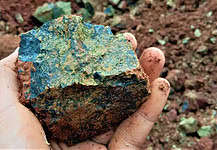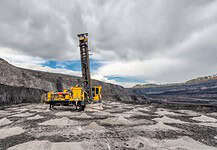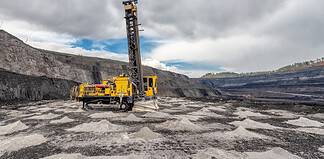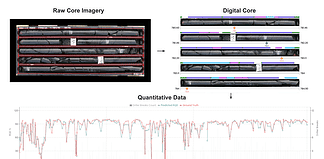THE telephone call, when it came, was from one long-time friend and colleague to another.
Making the call was Sir Arvi Parbo, who went on to become one of corporate Australia’s most significant figures.
Answering his call was Dr Roy Woodall, a 42-year Western Mining Corporation veteran and pioneering geologist credited with discovering some of the world’s great mineral deposits.
As Dr Woodall recounted to the WA Mining Club’s recent St Barbara’s Day lunch, he and Sir Arvi had started with WMC at about the same time.
Sir Arvi’s first job with WAMC was as a surveyor at the Bullfinch mine north of Southern Cross in 1956. By the time he retired, Sir Arvi had been managing director and chairman of WMC and chairman of BHP after the mining giant bought WMC in 2005.
Dr Woodall began as a geologist in 1953 and by the time of his retirement in 1995 was Director of Exploration – a position he had held for 17 years.
“One day, Arvi telephoned me to enquire what I planned to do with my records of 42 years; the same length of time they accumulated as his own,” Dr Woodall recalled at his lunch address.
“He told me that the history of WMC in his opinion would not be written in our lifetime.
“He was wrong. As soon as certain people decided that would be a sinful thing to do … the ex-WMC employees, by now retrenched by BHP, put their hands in their pockets and made it possible to fund the publication of a history of Western Mining.
“And so came this book: Mandarins and Mavericks – Remembering Western Mining 1993 – 2005.
“Sir Arvi said his records had been accepted by the National Library in Canberra and ‘my records should be alongside yours’. Well if the history of WMC is to be written, I said, I could contribute my records, Sir Arvi.
“And he said I want your records in the National Library in Canberra alongside mine – a very humbling experience.”
His emotional reminiscence came towards the end of Dr Woodall’s address in which he traversed his life as a young geologist and his WMC career and its intersection with some of the country’s leading corporate figures of the time.
This from a professional credited with contributing greatly to the discovery of the Kambalda Nickel Field, uranium at Yeelirrie, the East Spar condensate field, the Darling Range bauxite deposit and the vast Olympic Dam copper-uranium gold deposit.
Taking risks was a maxim Dr Woodall followed throughout his career, along with the ability of “seeing what other people have seen but thinking what no-one else has thought before”.
“Arvi and I joined Western Mining about the same time,” he said.
“He was a refugee from Estonia who arrived in Melbourne in 1949 with no knowledge of the English language and who came to Adelaide and after three years of part-time study and two years of full- time study graduated with first-class honours in mining engineering.
“In 1964 Arvi was transferred to Kalgoorlie – and that’s when I got to know him very well – as superintendent of WMC’s gold mines in WA.”
Kambalda’s first nickel deposits changed everything for WMC, Dr Woodall said, enabling the company to make its first tentative steps from mediocrity to greatness.
“In advance of the nickel boom, as far back as the 1950s, the company was already down its path of diversification from gold to bauxite,” he said.
“In the 1950s the company was looking at a bauxite deposit in the Darling Range which I was asked to comment on.
“I happened to know something about the mineralogy of that bauxite deposit and was able to confirm and convince the board in 1957 that the bauxite deposit was not only a source for alumina, it was the best source of alumina in the world.
“That was the first diversion from gold and nickel and on to more prosperity.
“According to Arvi it was (WMC chairman) Gordon Lindesay Clark’s vision and persistence that were the main driving force behind the company’s push into aluminium.
“In 1961 negotiations between Aluminium Company of America resulted in the formation of Alcoa of Australia in which they held a major interest.
“WMC took on an initial 20pc stake but this meant 20pc of the finance had to be found by them – not to sell the best alumina or bauxite in the world, but to build alumina refineries, two smelters and develop a coal mine.
“When you think back to the early iron ore days, in which Western Mining was invited to participate, their strategy was not like steel; it was to mine Mt Tom Price and make a pile of money.
“Western Mining spent the money Alcoa of America provided by owning 80pc of Alcoa of Australia just trying to make aluminium.
“That to me is an interesting thing to dwell on: where Western Mining might have gone if they had just stayed, like Rio Tinto did, with Mt Tom Price.”
Summing up his time at WMC and his admiration for the professionalism of those with whom he worked, Dr Woodall said Sir Arvi was privileged to spend his working life with Western Mining.
“And I can only say hoorah, it is no different for me,” he said.
- Story courtesy of the WA Mining Club.









































